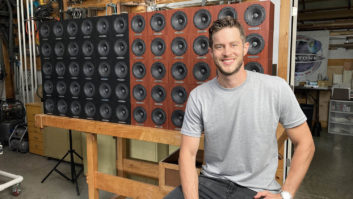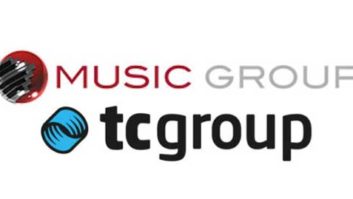A year ago, Danish signal processing specialists TC Electronicjoined up with Canadian IVL Technologies Ltd. to announce theformation of TC Helicon Vocal Technologies, a new company focusingon the development of vocal processing tools. TC Electronic haslong been associated with cutting-edge studio tools, and IVL haslargely operated in the background, developing products for othercompanies. For example, IVL was involved in the development ofDigiTech’s award-winning Vocalist Series harmony processors, TC’sacclaimed Intonator pitch corrector, DSP technology in Mackie’sdigital 8-bus console, and numerous projects in the gaming andother markets.
“Back in 1990, when we started out, we were limited in DSPhorsepower, and we decided to confine ourselves to time-domaintechniques for vocal processing,” says IVL’s chief technicalofficer Brian Gibson. “By the mid-’90s, things werechanging radically in terms of available processing power, and wedecided to throw off the shackles and do research into some newproducts — some pretty sophisticated stuff using 100 MIPSDSPs.”
Unveiled at last fall’s AES show in Los Angeles, TC Helicon’sfirst product was VoicePrism, an all-in-one box voice formant andpitch processor that includes mic- and line-level inputs,compression, gating, dual fully parametric EQ, four-voice harmony(with individually adjustable gender controls and humanizingparameters), fifth lead doubling voice for automaticdouble-tracking, and two separate post-effects blocks withchorus/flange, delay and reverb and harmony libraries. “It’sbeen a while since we came out with a major upgrade in the area ofvocal processing, which is why the VoicePrism is so much betterthan anything we’ve done before,” Gibson explains. “Butthe most exciting stuff is our next-generation technology involvingphysical modeling.”
VoicePrism’s simple interface and excellent vocal effects madeit a hit at the show; however, one of the unit’s most importantfeatures — a socket for an expansion daughter board —was almost entirely overlooked. Slated to ship this month are theVoiceCraft Human Voice Modeling Card and the VoicePrismPlus(essentially the VoicePrism with the card pre-installed).“VoiceCraft is the result of several years of research intodoing vocal processing in a different way,” Gibson continues,“modeled on real singers and incorporating some of thosethings into a physical model, such as pitch, glottal effects,inflection and formant manipulation.”
Vocal modeling is not exactly new. In fact, research anddevelopment of voice models has been around for years in thetelecommunications industry. However, the real difference is amatter of quality — assembling voices to read back phonenumbers from automated directory assistance is a far cry fromcreating professional-quality voice manipulation that holds up tostudio standards. The first professional implementation of VoiceModeling™, the VoicePrismPlus HumanVoice Modeling Formant Processor expands the VoicePrism’s leadvocal processing with real-time reshaping and resynthesis of thehuman voice. It includes numerous parameters for tweaking the leadvocal input, such as the ability to add breath, growl, rasp, headand chest resonances, inflection or vibrato, along with TCcompression, EQ, studio effects and digital I/O.
The process of developing VoiceModeling™ is no easy chore. “Aninstrument has a fixed bore, a bunch of holes in it that nevermove, and some things that open and close. It’s very difficult tomodel that, but when you look at the human voice, with all themuscles and control and things that people use to create differentsounds, the kinds of waveforms and spectral information that comeout are varied and complex,” says Gibson. “Also, peopleare very good at identifying when something sounds unnatural,because we use speech every day. If somebody plays a saxophonesound, a good sax player might say, ‘That’s notnatural,’ but it turns out that everybody is an expert attelling whether a voice sounds natural or not. Voice modeling is avery difficult task.”
Deciding how to define the individual nuances that create avocal characteristic is equally difficult. “The challengehere is trying to come up with things that make sense, whileputting parameter control in the user’s hands,” says Gibson.“This includes describing parameters in the model that userscan relate to if they want to make something sound a certain way,so it’s easier than programming an FM synth.”
In terms of expanded control, VoiceCraft definitely delivers.Most of us are used to tweaking reverb parameters — such aspredelay, room reflections, room size, HF damping and so on —but VoiceCraft offers nuances such as resonance, growl, rasp,breathiness, inflection and vibrato, as well as scooping, glottaland warp effects. Most are adjustable in percentage (a parameter wecan all relate to) and many offer creative possibilities beyondpercentage sliders, such as scoop, which can be set to move up/downor fast/slow — in exponential or sinosoidal increments.
“We’re looking into more sophisticated transformations interms of making people sound different,” Gibson adds.“VoiceCraft takes us well into that and allows for thecreation of some interesting presets to craft, enhance or change aperson’s voice, without introducing unnatural artifacts. We’re onthe cusp of some new and interesting things. I think the futurewill be fun.”
TC Helicon, a division of TC Electronic, 742-A Hampshire Road,Westlake Village, CA 91361. 805/373-1828; fax 805/379-2648;www.tc-helicon.com.







